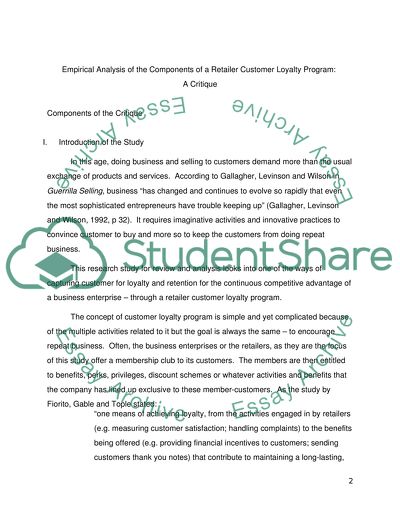Cite this document
(“An empirical analysis of the components of retailer customer loyalty Essay”, n.d.)
An empirical analysis of the components of retailer customer loyalty Essay. Retrieved from https://studentshare.org/miscellaneous/1553948-an-empirical-analysis-of-the-components-of-retailer-customer-loyalty-programs
An empirical analysis of the components of retailer customer loyalty Essay. Retrieved from https://studentshare.org/miscellaneous/1553948-an-empirical-analysis-of-the-components-of-retailer-customer-loyalty-programs
(An Empirical Analysis of the Components of Retailer Customer Loyalty Essay)
An Empirical Analysis of the Components of Retailer Customer Loyalty Essay. https://studentshare.org/miscellaneous/1553948-an-empirical-analysis-of-the-components-of-retailer-customer-loyalty-programs.
An Empirical Analysis of the Components of Retailer Customer Loyalty Essay. https://studentshare.org/miscellaneous/1553948-an-empirical-analysis-of-the-components-of-retailer-customer-loyalty-programs.
“An Empirical Analysis of the Components of Retailer Customer Loyalty Essay”, n.d. https://studentshare.org/miscellaneous/1553948-an-empirical-analysis-of-the-components-of-retailer-customer-loyalty-programs.


